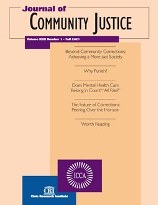Risk Confusion and the Program Peter Principle
Author: Ray Banks, M.P.A..
Source: Volume 17, Number 02, Winter 2008 , pp.15-16(2)

< previous article |next article > |return to table of contents
Abstract:
The effort to improve the effectiveness of community corrections programs has been greatly advanced by the focus on the criminogenic risk principle. The risk of reoffending, or the relative likelihood of committing new criminal offenses, can be predicted in general trends with increasing accuracy, given proper assessment of criminogenic factors. Both static (unchangeable) factors, such as criminal history and age, and dynamic (changeable) factors, such as substance abuse, antisocial attitudes, and antisocial associates, point to the risk level of an offender. Considerable research indicates, and program experience tends to confirm, that treatment effectiveness is enhanced by matching higher intensity interventions with high-risk offenders and lower intensity interventions with lower-risk offenders. However, this paradigm can be counterproductive if clarity of the risk concept is not maintained by stakeholders of community correctional services.Keywords:
Affiliations:
1: Turning Point of Central California, Inc..